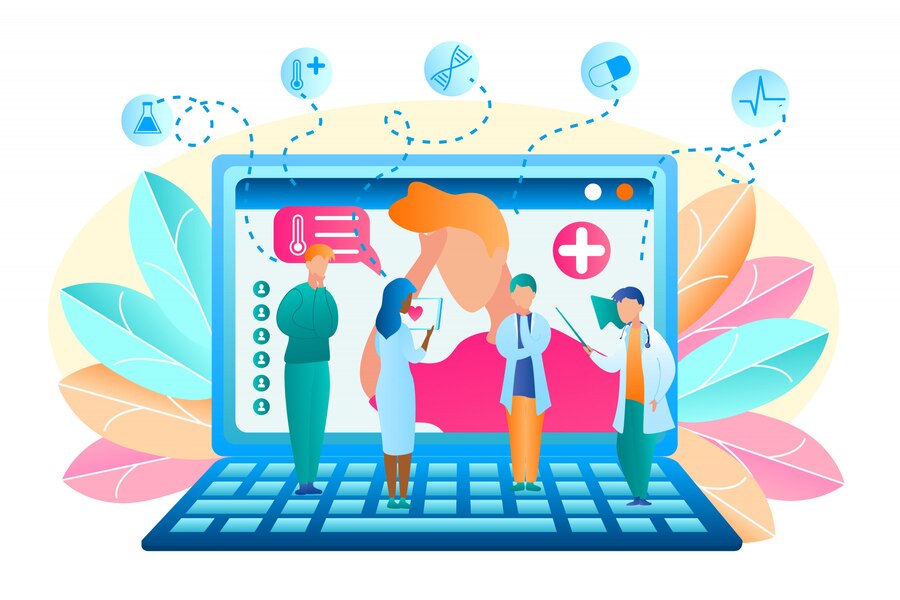In today’s gig economy, on-demand workforce solutions have revolutionized many industries, especially healthcare. Platforms like AllShifts have become essential, connecting healthcare providers with available shifts and workers looking for flexible hours. If you’re considering building an app like AllShifts, this guide will help you navigate the development process, from essential features and technology stacks to marketing strategies that ensure a successful launch.
1. Understanding the Purpose of AllShifts-Like Apps
AllShifts is a workforce management platform primarily designed for healthcare facilities. It streamlines shift scheduling by connecting employers with a pool of qualified workers who are available for immediate shifts. This model saves employers time while giving healthcare professionals flexible, on-demand job opportunities. An app like AllShifts could serve multiple purposes, such as:
- Streamlining staffing processes
- Offering real-time shift availability and booking
- Providing secure payment options
- Increasing job flexibility for healthcare workers
2. Research and Analyze the Target Market
Before diving into development, a thorough understanding of your target audience is critical. Since AllShifts caters mostly to healthcare facilities and professionals, understanding the pain points of both parties will shape the features and functionality of your app. Conducting market research will provide insights into:
- User demographics: Age, profession, and job status.
- Challenges faced by employers: High turnover, limited availability, regulatory compliance.
- Worker needs: Flexibility, fair compensation, and job availability.
3. Core Features to Include in an AllShifts Clone App
To compete in the market, your app needs essential features that offer a smooth, user-friendly experience. Some of these include:
a. Registration and Profile Creation
Allow both workers and employers to register and create profiles. Workers’ profiles should include qualifications, certifications, and work experience, while employers’ profiles should showcase their facility details and requirements.
b. Shift Management System
A robust shift management system is essential for seamless scheduling. This feature should let employers create, edit, and publish shifts while enabling workers to view and book available shifts in real-time.
c. Real-Time Notifications
Keep users updated with push notifications for new shifts, reminders, or other critical updates. Notifications are crucial for workers seeking last-minute or urgent job opportunities.
d. Advanced Search and Filtering Options
Include filter options to help users easily search for shifts based on location, specialization, pay rate, and shift timings.
e. In-App Communication
Facilitate direct communication between workers and employers. A built-in messaging system ensures quick resolution of queries and discussions on job specifics without leaving the app.
f. Secure Payment Gateway
Integrate a reliable payment system that allows for seamless, secure transactions. Ensure compliance with financial regulations and data security standards to protect users’ sensitive information.
g. GPS and Location Services
For location-based jobs, GPS integration is essential. Workers can see job locations, and employers can track check-ins or outs for time-keeping purposes.
h. Ratings and Feedback
An effective review system builds credibility and trust within the community. Allow both parties to rate each other post-shift, helping to maintain a high-quality user base.
i. Analytics and Reporting
Provide employers with reports on workforce performance, turnover rates, and shift fulfillment. This data will help them make more informed staffing decisions.
j. Compliance with Industry Regulations
In healthcare, adhering to regulations like HIPAA in the U.S. or GDPR in Europe is crucial. Ensure the app is compliant with relevant industry standards to avoid legal complications.
4. Choosing the Right Tech Stack
The technology stack you choose will significantly impact the performance, scalability, and security of your app. Here are some recommended tools and frameworks:
- Frontend: React Native or Flutter for cross-platform app development, ensuring a seamless experience on both iOS and Android.
- Backend: Node.js with Express or Django for scalable and fast server-side operations.
- Database: PostgreSQL or MongoDB to store user data and shift information securely.
- Real-time Notifications: Firebase Cloud Messaging or Twilio for instant alerts.
- Payment Gateway: Stripe or PayPal to enable secure transactions.
- Analytics: Google Analytics for Firebase or Mixpanel to track app usage and user behavior.
- Geolocation: Google Maps API for location services.
5. Step-by-Step Development Process
Step 1: Define Your App’s Requirements and Scope
Establish the objectives and goals of the app. Outline which features are essential, optional, and future goals to ensure efficient budgeting and planning.
Step 2: Wireframe and Design
Create wireframes to map out user flows and design prototypes that detail the user interface (UI) and user experience (UX). Focus on ease of navigation, aesthetic appeal, and accessibility.
Step 3: Backend and Frontend Development
Develop the backend structure and integrate your selected tech stack. This stage includes creating APIs, managing databases, and ensuring seamless interactions between front-end and back-end.
Step 4: Integration of Core Functionalities
Implement the app’s primary functionalities, such as shift management, notifications, and in-app messaging. Ensure these functions are reliable and perform optimally under heavy usage.
Step 5: Test and Refine
Conduct thorough testing, including unit testing, functional testing, and user acceptance testing (UAT). Identify and fix any issues to deliver a stable app upon release.
Step 6: Launch and Monitor Performance
Once testing is complete, launch the app on app stores and monitor performance closely. Gather user feedback to identify areas for improvement and refine the app accordingly.
6. Marketing Strategies for Your App
To ensure your app gains traction, you’ll need a strong marketing strategy. Here are some effective approaches:
a. Social Media Marketing
Promote the app on platforms like LinkedIn, Facebook, and Instagram to attract healthcare professionals and employers. Use targeted ads and showcase the app’s benefits to reach your audience.
b. Influencer and Industry Partnerships
Collaborate with healthcare influencers and organizations to spread awareness. Their endorsement can boost your app’s credibility and help reach a larger audience.
c. Content Marketing and SEO
Develop content that educates users about workforce management in healthcare. Blog posts, e-books, and webinars can attract users looking for staffing solutions, driving organic traffic to your app’s landing page.
d. Incentive Programs
Offer referral incentives for existing users to invite others. Gamify these incentives to create a viral growth effect, encouraging users to share the app.
e. Email Marketing Campaigns
Target healthcare facilities and professionals with personalized email campaigns detailing the app’s benefits. Highlight testimonials and case studies that demonstrate how the app improves staffing efficiency.
7. Revenue Streams for an AllShifts-Like App
Your app can generate revenue through various monetization strategies, including:
- Subscription Plans: Offer premium plans for employers, allowing them to post unlimited shifts, access priority support, or get access to top-tier professionals.
- Commission Fees: Charge a commission on each completed shift, providing a reliable revenue stream.
- In-App Ads: Non-intrusive ads can offer additional income without disrupting user experience.
- Freemium Model: Offer a basic free plan with limited features and premium options for added functionality.
8. Legal Considerations
When creating an app for healthcare or similar regulated industries, you must navigate several legal considerations:
- Compliance with Privacy Laws: Ensure adherence to HIPAA, GDPR, and other relevant privacy laws.
- User Agreement and Privacy Policy: Draft clear terms of service and a privacy policy that outlines data collection and use.
- Data Security: Invest in robust data security protocols to safeguard sensitive user information.
9. Future-Proofing Your App
Building a successful app is not just about launching; it’s about continuous improvement. Focus on future-proofing your app by:
- Monitoring User Feedback: Regularly check for reviews and feedback to address any user concerns or feature requests.
- Implementing Updates: Regular updates keep your app compatible with operating system changes and help it evolve with user expectations.
- Adopting New Technology: Explore AI for automated scheduling or machine learning to recommend suitable shifts to users, enhancing app efficiency.
10. Estimated Cost to Build an AllShifts Clone App
The cost of building an app like AllShifts depends on factors like features, design complexity, and team size. Here’s a rough breakdown:
- Basic Version: $10,000 – $20,000 (limited features, basic UI/UX)
- Mid-Level App: $30,000 – $50,000 (more features, enhanced security)
- Advanced App: $50,000+ (full-featured, complex functionalities, custom UI/UX)
Conclusion
Building an app like AllShifts can be a game-changer in the healthcare staffing market, offering convenience and flexibility to both employers and workers. By carefully analyzing your target audience, including essential features, and employing a well-thought-out marketing strategy, you can create a highly competitive, profitable app. Prioritize a user-friendly experience, maintain compliance, and be ready to adapt to user feedback. With the right approach, your app can become a valuable tool in managing shifts and workforce demands in the healthcare industry.



